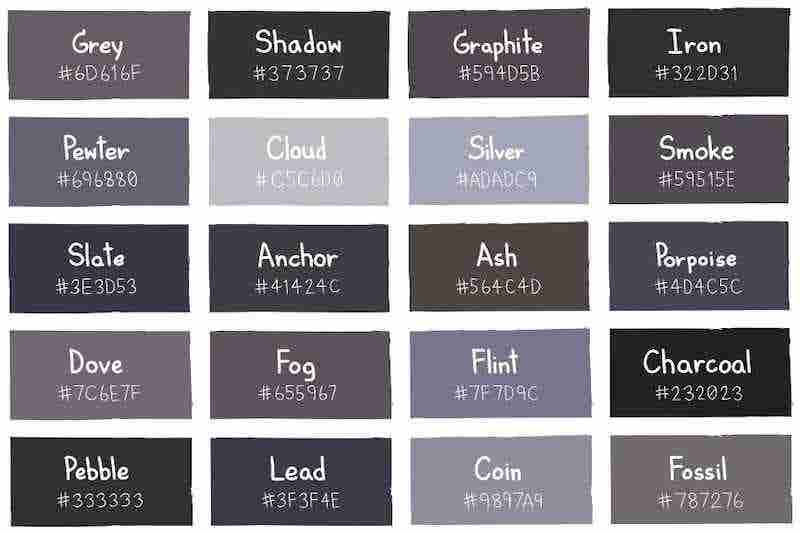Fabrics
When it comes to choosing the right fabric for your family's needs, having access to a reliable fabric resource is essential. From clothing to home decor, the material used plays a crucial role in comfort, durability, and overall quality. In this comprehensive fabric blog, we aim to provide mums and dads with a valuable resource that will help them navigate the world of fabrics and make informed decisions. Whether you're looking for the perfect fabric for your child's sensitive skin or seeking sustainable options, this guide has got you covered.
Section 1: Understanding Fabrics and Their Properties
Before diving into the different types of fabrics available, it's important to understand the properties that make each material unique. This knowledge will empower mums and dads to choose fabrics that align with their specific requirements. From the softness of cotton to the breathability of linen, exploring fabric properties will help you make confident choices.
Section 2: Natural and Organic Fabrics
-
Cotton: As one of the most popular fabrics, cotton offers excellent breathability, softness, and absorbency. It's a versatile material suitable for a wide range of clothing and household items.
-
Linen: Known for its durability and breathability, linen is an excellent choice for warm climates. It's a natural fabric derived from the flax plant and provides a comfortable option for mums and dads looking for sustainable choices.
-
Wool: Ideal for colder seasons, wool provides excellent insulation and warmth. It is a natural fiber that comes from sheep and is known for its softness and durability.
-
Silk: Silk is a luxurious fabric that offers a smooth and soft feel. It is known for its natural sheen and breathability, making it a great choice for special occasions or delicate garments.
Section 3: Synthetic Fabrics
-
Polyester: Polyester is a synthetic fabric that offers durability and wrinkle resistance. It is often blended with other natural fibers to enhance their strength and longevity.
-
Nylon: Nylon is a synthetic fabric known for its strength and elasticity. It is commonly used in activewear and outdoor gear due to its moisture-wicking properties.
-
Acrylic: Acrylic is a synthetic fabric that mimics the softness and warmth of wool. It is often used as a more affordable alternative to natural fibers.
Section 4: Specialty Fabrics
-
Bamboo: Bamboo fabric is derived from the pulp of bamboo plants. It is a sustainable choice that offers softness, breathability, and moisture-wicking properties, making it ideal for baby clothes and bedding.
-
Hemp: Hemp fabric is made from the fibers of the hemp plant and is known for its durability and breathability. It is an eco-friendly option that requires fewer pesticides during cultivation.
Section 5: Considerations for Children and Babies
When choosing fabrics for children and babies, extra care must be taken to ensure their safety and comfort. Look for fabrics that are hypoallergenic, free from harmful chemicals, and gentle on delicate skin. Opting for natural and organic fabrics is often a preferred choice for the little ones.
Section 6: Sustainable Fabric Options
In today's eco-conscious world, many mums and dads are seeking sustainable fabric options. From organic cotton to recycled polyester, there are various choices available that minimize environmental impact and promote ethical practices. By opting for sustainable fabrics, parents can contribute to a greener future for their children.
Conclusion:
Choosing the right fabric is essential for mums and dads who want to provide their families with comfort, durability, and a touch of style. This fabric resource guide offers valuable information on various materials, their properties, and considerations for different needs. Whether you're looking for natural and organic fabrics, exploring synthetic options, or seeking sustainable choices, this guide equips you with the knowledge needed to make informed decisions. By choosing the right fabric, you can ensure your family's well-being and contribute to a sustainable and stylish lifestyle.
-
 There’s nothing worse than buying brand new outdoor furniture, only to find that after a couple of months, the material has faded in the sun. Now it is a shadow of its former self. However, despite the obvious threats ultraviolet (UV) radiation poses, many manufacturers still churn out outdoor furniture without adequate sun protection. As a consequence, materials look bleached, often after ju...May 6 2022
There’s nothing worse than buying brand new outdoor furniture, only to find that after a couple of months, the material has faded in the sun. Now it is a shadow of its former self. However, despite the obvious threats ultraviolet (UV) radiation poses, many manufacturers still churn out outdoor furniture without adequate sun protection. As a consequence, materials look bleached, often after ju...May 6 2022 -

Do You See What I See?
Do you see what I see? It’s an age-old philosophical question and, unfortunately, not one we’re likely to solve any time soon. That’s because everything that we perceive is a subjective experience. Our minds construct images in our conscious perception from light information that comes in through the eyes - and that process is invisible to science tools. In the ordinary course of life, th...September 15 2021 -

Pantone Colour Of The Year 2021
Every year, Pantone - a firm that works to standardise colours across the industry - announces its “colour of the year.” Colour of the Year 2021 is Pantone 17-5104 Ultimate Gray + Pantone 13-0647 Illuminating - two independent colours that highlight how different elements come together to support one another. None of this is passing us by. Bean Bags R Us has been and will be, introducin...September 14 2021 -

How to Clean Velvet Furniture
Cleaning velvet is a little different from most other types of fabric. Velvet fibres protrude from the backing material in a short, dense pile making them more prone to flattening. Cleaning, therefore, must be gentle. Today we'll show you how to clean velvet furniture. This guide explores how to clean velvet beanbags, chairs, and couches effectively and get rid of stains for good. As you...August 23 2021 -

Is Polyester Fabric Safe?
Polyester - it is everywhere! Read the label on practically any item of clothing you buy and there is a good chance that the synthetic material will make an appearance. But is polyester fabric safe to use? Or does it harbour some potential hazards? That’s the question we address in this post. As you’ll discover, polyester can be hazardous under certain conditions. However, the overall d...August 14 2021 -

How To Clean Corduroy
Corduroy is one of the most distinctive textiles in the world. The majority of modern corduroy is made of tufted cords, arranged in parallel with each other with a channel in between. The fabric is both soft and durable, making it a popular alternative to rayon and polyester. In this post, we look at how to clean corduroy upholstery, bean bags, cushions and shoes. Corduroy has some wonde...July 13 2021 -

Is Polyester Recyclable?
Polyester is a synthetic material used to make around half of the world’s clothing output. What’s more, that figure is set to double due to increased demand from the growing global middle class and consumers’ desire for stretchier, harder-wearing garments. But is polyester recyclable? The sustainability of polyester is something that concerns many environmental organizations. They worry ...July 8 2021 -

What type of thread to use for outdoor fabric?
There is a range of different options when choosing thread to use for outdoor fabric. The most common types include nylon, polyester, and PTFE. These are the standard materials for outdoor cushions, outdoor beanbags and pool beanbags. These share similar qualities. But they also have significant differences regarding weight, breathability, stain resistance and colour fastness. There are pros an...September 28 2020 -

How to Get an Oil Stain Out of Polyester Fabric
Bean bags - especially those in polyester - are durable and exciting pieces of furniture. With proper care and maintenance, you are likely to enjoy your bean bag for many years to come. However, you might need to remove oil from polyester at least once during the life of your bean bag. But don’t fret! There are two cleaning methods you can use for your stained bean bag and make it look like ...August 30 2020 -

What IS PU Coating On Fabric?
It's commonly known as "poly-coating," but PU coating is polyurethane applied to the surface of a fabric. Polyurethane is a type of polymer. A polymer is a synthetic compound made from petroleum residue. PU coating on fabric is the best option to ensure the material doesn't get ruined. PU coating on fabrics like polyester, nylon, cotton and leather act as a base material on one side of the mate...June 14 2020 -

What Kind of Fabric is Waterproof?
When a material is ‘waterproof’, it fits into criteria outlined by a governing specification and clear conditions of a laboratory test. In essence, waterproof fabrics are materials that are resistant to penetration by water. This type of waterproof fabric is an invaluable tool when it comes to making household goods, outdoor clothing, shoes and other lifestyle equipment. Waterproofing agents ca...May 17 2020 -

Is Polyester Fabric Waterproof?
What kind of material do you want to see in your furniture? Of course, you want something to be cozy if you're going to sit or lie down on it. And you want it to last you a reasonable amount of time. It's one of the reasons why waterproof bean bags are so popular. A bean bag is something you can sink yourself in. It could be perfect for all environments. And even the rain won't make it sogg...April 26 2020

